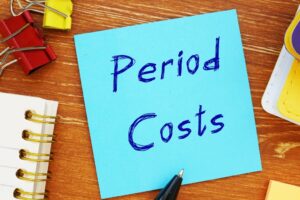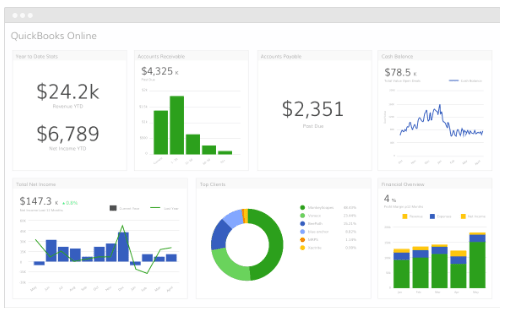Content

You may want to group certain operating expenses on one line for simplicity’s sake. For example, your electric, gas, and sewer utility expense can be grouped as “Utilities.” This keeps your income statement from becoming too unwieldy. An income statement is one of the four primary financial statements. The other primary financial statements are the balance sheet, the statement of cash flows, and the statement of shareholder’s equity. Smart business owners use income statements alongside other key financial documents, like the balance sheet and cash flow statement, to check up on and improve the health of their businesses. With income statement data, you can evaluate factors such as your profitability and ability to manage your expenses.
But the highlighted lines on ADM’s filed income statement don’t, in the minds of the analysts who filled in the template, fit the definition of Other Operating Income or Expenses. These net out to $66 million in income and, for the sake of comparing with other companies’ results, are judged to be more properly listed on the Non-Operating Income or Expenses line. If it’s important that the final model includes a scenario analysis — for example, what if iPhone unit sales are better than expected, but the iPhone average selling price is worse than expected?
This helps the users of the financial statements understand the capability of the company to generate profits before taking into account the impact of the financing activities. The income statement, also known as the Statement of Revenues, Expenses, and Changes in Net Position, summarizes an entity’s revenue streams, expense categories, and overall profitability.
How To Read Income Statement?
For instance, financial statements for the month of January 2020would consist of a balance sheet as of January 31, 2020, and a monthly Income Statement for the entire month of January 2020. Both the balance sheet and income statement form part of the fundamental financial statements that are prepared to understand the financial standing of a business entity. Are the expenses incurred by your business in order to run its normal course of operations such as payroll, rent, office supplies, etc. Thus, you need to add all the operating expenses specified in the trial balance report and enter the same expenses in the income statement as selling and administration expenses. Cloud-based accounting software , you can easily generate a trial balance report. Trial balance provides the closing balances of all the ledger accounts on a specific date and is the first report needed to prepare all of a business’s financial statements.

ReinvestedReinvestment is the process of investing the returns received from investment in dividends, interests, or cash rewards to purchase additional shares and reinvesting the gains. Investors do not opt for cash benefits as they are reinvesting their profits in their portfolio. Is considered the company’s future earnings indicator and hence closely monitored by financial analysts. DepreciationDepreciation is a systematic allocation method used to account for the costs of any physical or tangible asset throughout its useful life. Its value indicates how much of an asset’s worth has been utilized. Depreciation enables companies to generate revenue from their assets while only charging a fraction of the cost of the asset in use each year. Total expenses are the sum of cost of goods and operating expenses.
Related Topics
Amount, after effect of policies assumed or ceded, of expense related to provision for policy benefits and costs incurred for health insurance contracts. The aggregate amount of income or expense from ancillary business-related activities .

When reviewing, make sure that all account balances align with either the expense or revenue normal balance for the specific account. This helps to ensure correct balances and eliminate potential errors when reviewing the Account Negative Balance Report. Complete a variance analysis for all operating accounts on a quarterly basis. As part of this process, organizational units need to be able to provide explanations of material variances to UCO, upon request only. Please check with your campus and/or RC, as they may require variance analysis submission on a quarterly or annual basis.
What Is A Balance Sheet?
Variances should be analyzed based on specific thresholds for the current fiscal year. Refer to the Fiscal Year-End Closing Checklist for those thresholds. The parts of the income statement before taxes and interest show your company’s EBIT, or earnings before interest and taxes.
- Fuel costs incurred that are directly related to goods produced and sold and services rendered during the reporting period.
- A condensed presentation likely only has one line item for revenue, one line item for the cost of goods sold, and one more for operating expenses.
- Net profit, also called “net sales” or “net earnings,” is the total profit for your business.
- A balance sheet shows a snapshot of a company’s assets, liabilities and shareholders’ equity at the end of the reporting period.
- This helps you chart future goals and strategies for sales, inventory, and operating overhead.
It gives you timely updates because it is generated much more frequently than any other statement. The income statement shows a company’s expense, income, gains, and losses, which can be put into a mathematical equation to arrive at the net profit or loss for that time period.
Reporting Revenues
There is no one “right” way to define expenses, and companies are afforded a degree of latitude. But there is a standard way, and that’s what we’ll discuss in this section. Most income statements also present the number of Shares Outstanding, then computes Earnings Per Share.
- Most income statements include a calculation of earnings per share or EPS.
- All expenses linked to non-core business activities, like interest paid on loan money.
- And information is the investor’s best tool when it comes to investing wisely.
- If you need help with bookkeeping and preparing financial statements, it’s a good idea to work with a professional.
- Operating Income represents what’s earned from regular business operations.
- Tax collected from customer is tax assessed by governmental authority that is both imposed on and concurrent with specific revenue-producing transaction, including, but not limited to, sales, use, value added and excise.
These revenues and expenses are accounted for separately to better analyze the performance of the core business and ignore outside factors. An income statement is one of the three main financial statements, along with the balance sheet and cash flow statement. It represents the inflow and outflow of resources the entity accumulates in a given period, most typically, a fiscal year. Trial balance reports are internal documents that list the end balance of each account in the general ledger for a specific reporting period. Creating balance sheets is a crucial part of creating an income statement, as it’s how a company gathers data for their account balances. It will give you all the end balance figures you need to create an income statement.
Whats The Difference Between A Balance Sheet And Income Statement?
Shifting business location, stopping production temporarily, or changes due to technological improvement do not qualify as discontinued operations. Depreciation and amortization are non-cash expenses that are created by accountants to spread out the cost of capital assets such as Property, Plant, and Equipment (PP&E). Most businesses have some expenses related to selling goods and/or services.

And information is the investor’s best tool when it comes to investing wisely. The next section is the operating income, which is calculated by subtracting the operating expenses from the gross profit.
Preparing one is simple if you stay on top of your company’s bookkeeping. An Income Statement compares company revenue against expenses to determine the net income of the business. Fuel costs incurred that are directly related to goods produced and sold and services rendered during the reporting period. If a company buys a piece of machinery, the cash flow statement would reflect this activity as a cash outflow from investing activities because it used cash. If the company decided to sell off some investments from an investment portfolio, the proceeds from the sales would show up as a cash inflow from investing activities because it provided cash. The balance sheet comprises assets, liabilities and owner’s equity toward the end of the accounting period.
Want More Helpful Articles About Running A Business?
These often require management’s most difficult, subjective or complex judgments. To calculate EPS, you take the total net income and divide it by the number of outstanding shares of the company. For information about the permissions required to view and customize financial statements, see Permissions and Roles. Revenue that is not related to the core operations of your practice is accounted for in this section. This may include interest and other earning from investments, donations and gains or losses from the sale of assets.
While revolver debt is usually the deficit plug, cash is the surplus plug such that any excess cash flows forecast by the model naturally lead to higher cash balances on the balance sheet. This means that we deal with the same circularity issues here as we do when forecasting interest income. Interest income is a function of projected cash balances and the projected interest rate earned on idle cash. We can only forecast it once we complete both the balance sheet and the cash flow statement. Like interest expense, analysts can calculate interest by using either the beginning- or average-period approach. And like interest expense, if you forecast interest income based on average cash balances, you’ll be creating a circularity.
This total net pay comprises salary, wages, bonus, commission, deduction, perquisites, and other benefits. Gross SalesGross Sales, also called Top-Line Sales of a Company, refers to the total sales amount earned over a given period, excluding returns, allowances, rebates, & any other discount. Revenue is recognized in the period it is earned, which may or may not be in the same period as the related cash collection. Recognition of revenue when earned is a fundamental principal of accrual accounting. Describe other comprehensive income and identify major types of items included in it. Microsoft has a net income of US$ 44.28 billion which is calculated by adding net other income to operating income or EBIT.
Expense related object codes have a range of 2000 – 7999 within Indiana University. Allotments and Charges Out plus Transfers Out may not fall in this range because they have predetermined mapping within the system. For further detail on this, refer to the Summary of Transfer Object Codes section. Unlike net profit (the bottom line of the P&L), gross profit shows you your company’s profit before subtracting expenses. If you have a healthy gross profit and a significantly lower net profit, you can make expense-cutting decisions. Here’s how to put one together, how to read one, and why income statements are so important to running your business.
In simple terms, owner’s or shareholder’s equity is equal to the total assets attributable to owners or shareholders in the event of the company’s liquidation, after paying all debts or liabilities. Profit After TaxProfit After Tax is the revenue left after deducting the business expenses and tax liabilities. This profit is reflected in the Profit & Loss statement of the business. This document is prepared to discover areas where expenses can be controlled and more income can be generated. Gross profit margin is the difference between revenue and cost of goods. Gross profit margin can be expressed in dollars, as a percentage, or both.
This brochure is designed to help you gain a basic understanding of how to read financial statements. Just as a CPR class teaches you how to perform the basics of cardiac pulmonary resuscitation, this brochure will explain how to read the basic parts of a financial statement. It will not train you to be an accountant , but it should give you the confidence to be able to look at a set of financial statements and make sense of them. If you can read a nutrition label or a baseball box score, you can learn to read basic financial statements. If you can follow a recipe or apply for a loan, you can learn basic accounting. The https://www.bookstime.com/ and balance sheet follow the same accounting cycle, with the balance sheet created right after the income statement. Along with the cash flow statement, they comprise the core of financial reporting.
The sum of dilutive potential common shares or units used in the calculation of the diluted per-share or per-unit computation. Conceptually, forecasting using average debt is considered more logical because debt balances change over the period. However, debt is often used as plug in a model, and when using average debt, this creates a circularity in the model. Circularity is problematic in Excel, and that’s why analysts often use beginning debt balances instead.
Net Income Or Net Loss
Add up all the cost of goods sold line items on your trial balance and enter the total into the cost of goods sold line on your income statement directly under the revenue line. The income statement may go by other names, including the profit and loss statement or the statement of earnings. An income statement is a financial statement that shows your revenue after expenses for a particular period, such as a month, quarter, or year.
Within Indiana University, revenue object codes have a range of 0001 – 1999. Transfer In object codes may not fall within this range because they have pre-determined mapping within the system. A balance sheet shows you how much you have , how much you owe , and how much is remains .

